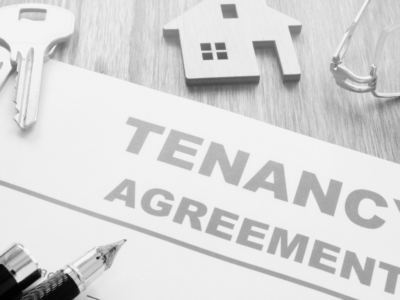With the pandemic rolling on in many guises, the Brexit transition hitting turbulence, and the run-up to COP26 influencing housing policy, 2021 has been full of hurdles for the industry.
However, the sector has overcome these and has also been “turbocharged” by the Stamp Duty holiday.
With this as the backdrop, it looks set to harness pent-up demand and grow more consistently next year.
To try and make sense of the property market in the year ahead, we’ve put together our predictions for 2022.
2022 property predictions
Rent and house prices will increase
In terms of rent, there has already been a bounce back to pre-COVID levels in cities.
But we’ll likely see a rise in rent prices primarily because of a supply gap, with some landlords choosing to sell their property in a very good sales market.
We predict that there will be a 3% rise in rent across the country and that could even reach up to 5-10% in some high-growth areas.
The landscape will be much the same for house prices, with buyer demand pushing prices to a record high.
Next year we expect to see a price growth of around 3% for house sales.
Areas for growth
The Northwest, Midlands, East Anglia, and Essex are likely to see higher than average growth for rent and house prices in 2022.
This is in areas where movers get more bang for their buck and where they can fulfil their desire to have more space following the lockdown-inspired surge to suburbs.
Likewise, investors purchasing in the Midlands and North are benefiting from preferable mortgage deals with better loan to value ratios, improving yield and monthly cash returns on investment.
It’s because of this (despite historically strong equity growth in the south), buy to let activity has been more prominent in the Northern towns in 2021 and we expect this to continue in 2022.
Despite businesses starting to return to offices, many employers are still working to hybrid models, and this opens more buying options outside of traditional high employment areas such as major cities and commuter towns.
Build to rent set to expand
We recently covered the explosive rise of build to rent – building more housing designed for long term renters.
At the moment, this is predominately for multifamily properties, such as apartments or flats, but we predict this will soon diversify into the single-family or individual house market.
This is set to expand next year with real estate heavy hitters, such as Lloyd’s and John Lewis & Partners, diversifying some of their portfolios from commercial property into build to rent residential property, sending a signal to landlords that there is strength in the sector.
But the market needs a far larger supply of units in the build cycle to keep up with demand and this is a strong time to invest in build to rent.
The pandemic has shown residential property as a strong, resilient asset class and buy to let continues to show excellent return, with strong HPI and RPI projections, so it’s an opportunity for individual investors to expand their portfolio.
At LRG we’ve been working with several hedge funds and institutional investors that are readily investing in build to rent for residential property and can help larger private developers get into this space.
Deposit replacement schemes to become the standard
Our no-deposit ‘The Residency’ scheme was ground-breaking when it was implemented in 2018 but we predict this will soon become the norm for the industry with similar models set to grow.
With living costs on the rise, being able to move without a large amount of savings for a deposit makes it easier for tenants to find a property where there is less stock on the market.
We’re typically seeing one in two new tendencies choose to take the no-deposit option, and we only anticipate demand will grow.
We also see technology helping to support the onboarding experience, with landlord and tenant portals helping to deliver a more seamless experience for all involved and we expect other providers of this service to do the same as its adoption continues at pace.
Like our own offering, we predict that most of these schemes will draw strength from having a strong in-person approach, matched with a smooth digital function.
This will allow customers to download and access information, make enquiries and pay work orders at a time that’s convenient for them.
Housing market linked to economic performance
With the return of dining out, cinemas, nightclubs, and now relatively unrestricted flights, life seems to be back to normal after a year of doing everything from home.
The vaccine rollout has seemingly brought an end to lockdowns and even if they were to come back into effect, virtual home viewings would continue unabated.
Now, following job misery during COVID-19, employment is on the rise, and this is particularly pronounced with the location freedom that remote working on mass has enabled.
With the job market buoyant, this will create a ripple effect in the nation’s economy, which in turn will put more people in a position to move home.
We predict that greater economic consistency will feed the growth of the housing market.
Tighter property checks
The Renter’s Reform Bill is anticipated in 2022 and this could seek to make the rental market safer and less susceptible to unscrupulous landlords.
This has been delayed by the appointment of a new Housing Minister, but we still expect it to be unveiled early next year and it could shake things up in the industry, such as addressing key topics like unique property reference numbers.
These could be used to properly identify properties and be set up to create a type of property MOT, which would help tenants weed through homes that are suitable for habitation.
Such a scheme would, thankfully, be the bane of rogue landlords that can prosper in the current system and tarnish the name of reputable landlords providing a much-needed role in the private rented sector.
Minimum EPC rating rising to C
Most in the industry are aware that we could all do better when it comes to reducing carbon emissions.
Now that the Government have proposed that all rental properties will need an EPC rating of ‘C’ or above by 2025, we expect to see many landlords adapt their properties to increase their energy efficiency.
However, it’s important to recognise that creating an arbitrary sustainability benchmark for properties that landlords must stick to isn’t the silver bullet to resolve all energy issues in the property sector.
Instead, this ruling could cause further divestment in the sector because landlords have already taken a hit from the removal of mortgage interest rate relief and Stamp Duty surcharges.
Another push will likely squeeze this sector even more, and put greater pressure on the supply gap, causing rents to rise further.
That being said, investing in your property is never money down the drain and the initial capital investment into a greener home will improve its value, make it more appealing to tenants and make future rent increases more sustainable with the pressure off the day-to-day energy bills of tenants.
And of course – it’s all tax-deductible.
On the up
After a year of robust market challenges, the demand for property is set to grow further, particularly in those areas where more space, a garden and parking can be secured for less cost.
As always, there are a few unknowns to come, but the housing sector will remain buoyant through 2022 and beyond.
Authors: Kevin Shaw, National MD Sales, and Michael Cook, National MD Lettings, LRG






















Comments